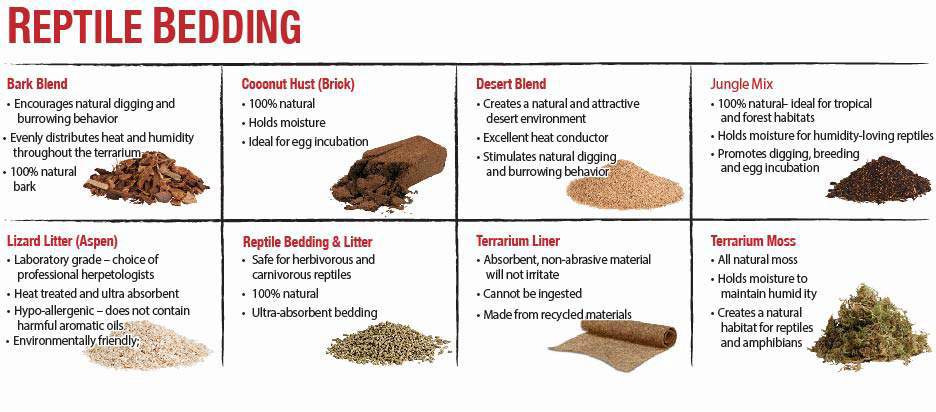If you are a reptile enthusiast and you own lizards, then you know how important it is to provide them with a suitable habitat. One key element to creating an ideal living space for your pet lizards is choosing the right substrate. In this article, we will explore everything you need to know about substrate for lizards, including the types of substrates available, how to choose the appropriate one, how to maintain it, and more.
What is Substrate for Lizards?
Substrate refers to the material that lines the bottom of a reptile’s enclosure. Choosing the appropriate substrate is crucial because it provides the foundation for a healthy and comfortable environment for your pet lizards to thrive in. Different species of lizards require different types of substrates, depending on factors such as their natural habitat, size, and behavior.
Types of Substrate for Lizards

There are various kinds of substrates available in the market, and each one has its pros and cons. Below are some commonly used substrates for lizards:
1. Sand
Sand is one of the most popular substrates for lizards due to its natural appearance and affordability. However, it’s important to note that not all species of lizards can tolerate sand, as it can cause impaction if ingested. Therefore, it’s essential to research your lizard species’ diet and habits before using sand as a substrate, and regularly clean the tank to prevent impaction.
2. Reptile Carpet
Reptile carpet is a synthetic, easy-to-clean substrate made of a soft, absorbent material that mimics grass or moss. It is ideal for lizards that prefer to walk on a smoother surface, such as bearded dragons or geckos.
3. Coconut Fiber
Coconut fiber, also known as coir, is made from the husk of coconut shells and is another popular substrate for lizards. It is suitable for lizards that require high humidity levels, such as chameleons or iguanas.
4. Paper Towels
Paper towels are a cheap and easy-to-clean substrate option for lizards that don’t require a complex environment, such as hatchling bearded dragons.
5. Bark
Bark is a natural-looking substrate that mimics the forest floor and is ideal for arboreal lizards such as chameleons. However, it can be challenging to clean and maintain.
Choosing the Right Substrate for Lizards
Choosing the appropriate substrate for your pet lizard depends on various factors such as size, age, behavior, and habitat. Here are some tips to consider when selecting the best substrate:
1. Research Your Lizard Species
Different species of lizards have different requirements when it comes to their living environment. Some lizards need a dry, arid environment, while others require higher humidity levels. Knowing your lizard’s natural habitat is essential when selecting the right substrate.
2. Consider Size and Age
Younger lizards may require substrates that are less abrasive or smaller in particle size to prevent injury or impaction. As lizards grow older, they may need coarser substrates to provide better traction.
3. Safety First
Avoid substrates that pose a danger to your lizard, such as sand for lizards that burrow, or loose substrates that can be ingested, causing impaction.
4. Ease of Maintenance
Choose a substrate that is easy to clean and maintain to ensure a hygienic enclosure for your pet lizard.
How to Make Substrate for Lizard
Making substrate for lizards is easy, and it can save you money in the long run. Here’s a step-by-step guide on how to make substrate for your pet lizard:
Materials Needed:
- Coconut coir
- Sand
- Organic topsoil
- Water
- Bucket
- Mixing tool
- Measuring cup
Step 1: Measure the Ingredients
Measure one part coconut coir, one part sand, and two parts organic topsoil using the measuring cup.
Step 2: Mix the Ingredients
Add the measured ingredients into the bucket and mix them thoroughly using the mixing tool. Gradually add water while mixing until the mixture is moist but not soaked.
Step 3: Test the Humidity
Check the humidity of the substrate by squeezing it with your hand. It should hold its shape without dropping excess water.
Step 4: Fill the Enclosure
Fill the enclosure with the substrate evenly, ensuring that there are no clumps.
Step 5: Clean the Enclosure
Clean your lizard’s enclosure regularly to maintain hygiene and prevent infections. Replace the substrate every three to four months or when it becomes dirty.
Maintaining Substrate for Lizards
To ensure a healthy and ideal environment for your pet lizards, proper maintenance of the substrate is crucial. Below are some tips on how to maintain your substrate:
1. Spot Clean Daily
Remove any feces, uneaten food, or debris from the substrate daily to maintain cleanliness and prevent odor buildup.
2. Deep Clean Regularly
Deep clean the enclosure every four weeks by removing all the substrate and thoroughly cleaning the walls, furniture, and accessories with a reptile-safe disinfectant.
3. Replace Substrate Periodically
Replace the substrate with fresh ones every three to six months, depending on the substrate’s type and condition.
FAQs about Substrate for Lizards
Can I use sand as a substrate for my lizard?
Sand can be used as a substrate for some species of lizards, but it’s essential to research your lizard’s dietary habits and behavior before using sand. Sand can cause impaction if ingested and may not be suitable for all lizards.
What is the best substrate for chameleons?
Chameleons require high humidity levels, so a substrate that retains moisture, such as coconut fiber, is ideal.
Can I reuse the substrate after deep cleaning?
Itdepends on the type of substrate and its condition. Some substrates, such as reptile carpet or paper towels, can be reused after cleaning. However, natural substrates like sand or bark may need to be replaced entirely.
Is it necessary to mist the substrate for high humidity species?
Yes, misting the substrate is crucial for lizards that require higher humidity levels. It helps maintain the required moisture level for their skin and respiratory health.
How often should I replace the substrate in my lizard’s enclosure?
The frequency of substrate replacement depends on the type of substrate and its condition. Generally, substrates should be replaced every three to six months, but it’s essential to monitor their condition regularly and replace them if they become soiled or contaminated.
Conclusion
Choosing the appropriate substrate for your pet lizard is crucial to providing a healthy and comfortable living environment. Before selecting a substrate, research your lizard species’ habitat requirements, size, age, and behavior to identify the best option. Remember to maintain your substrate properly by spot cleaning daily, deep cleaning regularly, and replacing the substrate periodically. By doing so, you’ll create an ideal home for your beloved pet lizards.



